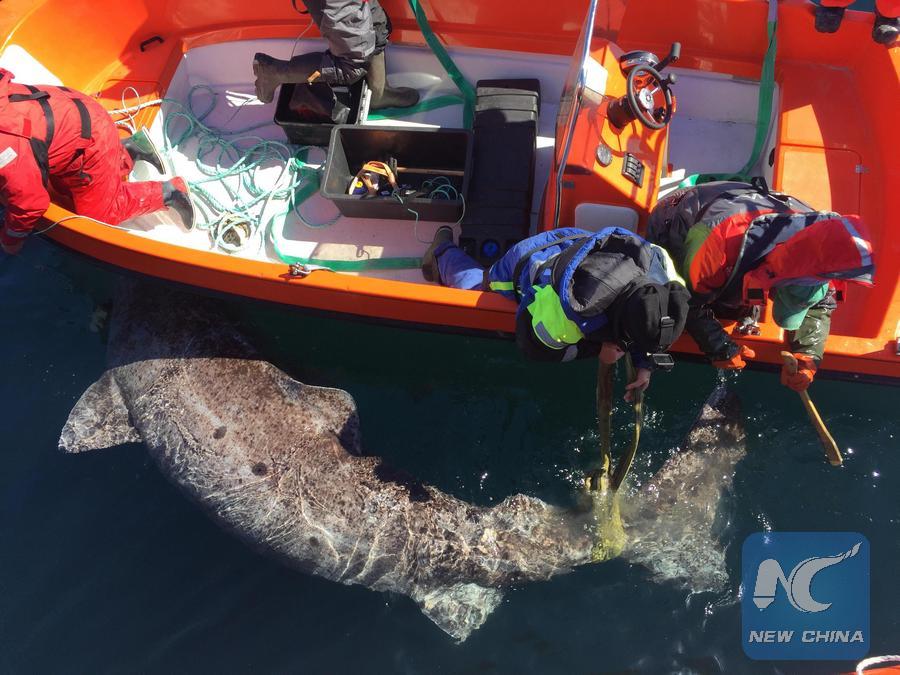
The photo shows the scientists are studying Greenland shark. (Photo courtesy of University of Manchester)
LONDON, June 23 (Xinhua) -- The day a team of international scientists had a close encounter with one of the world's longest living predators was captured in a video released Wednesday.
The physiologists, including Dr. Holly Shiels from the University of Manchester, have just returned from Greenland where they battled storms and icebergs to study Greenland shark, one of the world's most mysterious sharks.
The eight scientists and ship's crew on the expedition sailed for more than 40 hours through gale-force winds and waves to reach the research area.
The purpose was to understand more about the shark, a top predator in the Arctic, which lives for more than 272 years, and possibly even more than 400.
"Scientists know that it is both a hunter and a scavenger because it has been seen to feed on seals and has been found with the remains of polar bears and whales in its stomach. It is also one of the largest species of shark -- growing to about five-and-a-half meters -- just a bit smaller than the great white," said a spokesman at the University of Manchester.
Although known to be under pressure from fishing and climate change, very little is known about the species. The purpose of the mission was to find out more about its heart, movements, diet, and reproductive patterns.
Shiels, who is also a trustee of The Physiological Society, said: "At times, the seas were so rough that the ship felt like the inside of a washing machine, but at others the water was like a sheet of glass."
"We were able to study both male and female of a variety of ages, which will give us a great insight into the species and how best to protect it."
Initial observations about the sharks included the incredibly slow heart rate -- just one beat every ten seconds, and more data, from the sharks that were tagged and released.
As well as helping to understand how to conserve the shark, the study may also lead to greater understanding of diseases associated with the aging process, such as heart disease and cancer, which could help with new therapies for humans in the future, according to the scientists.
"It's very early days for the results, but the number of samples we've taken and the satellite tagging means that this remarkable species is now beginning to reveal some of its secrets," said Shiels.

